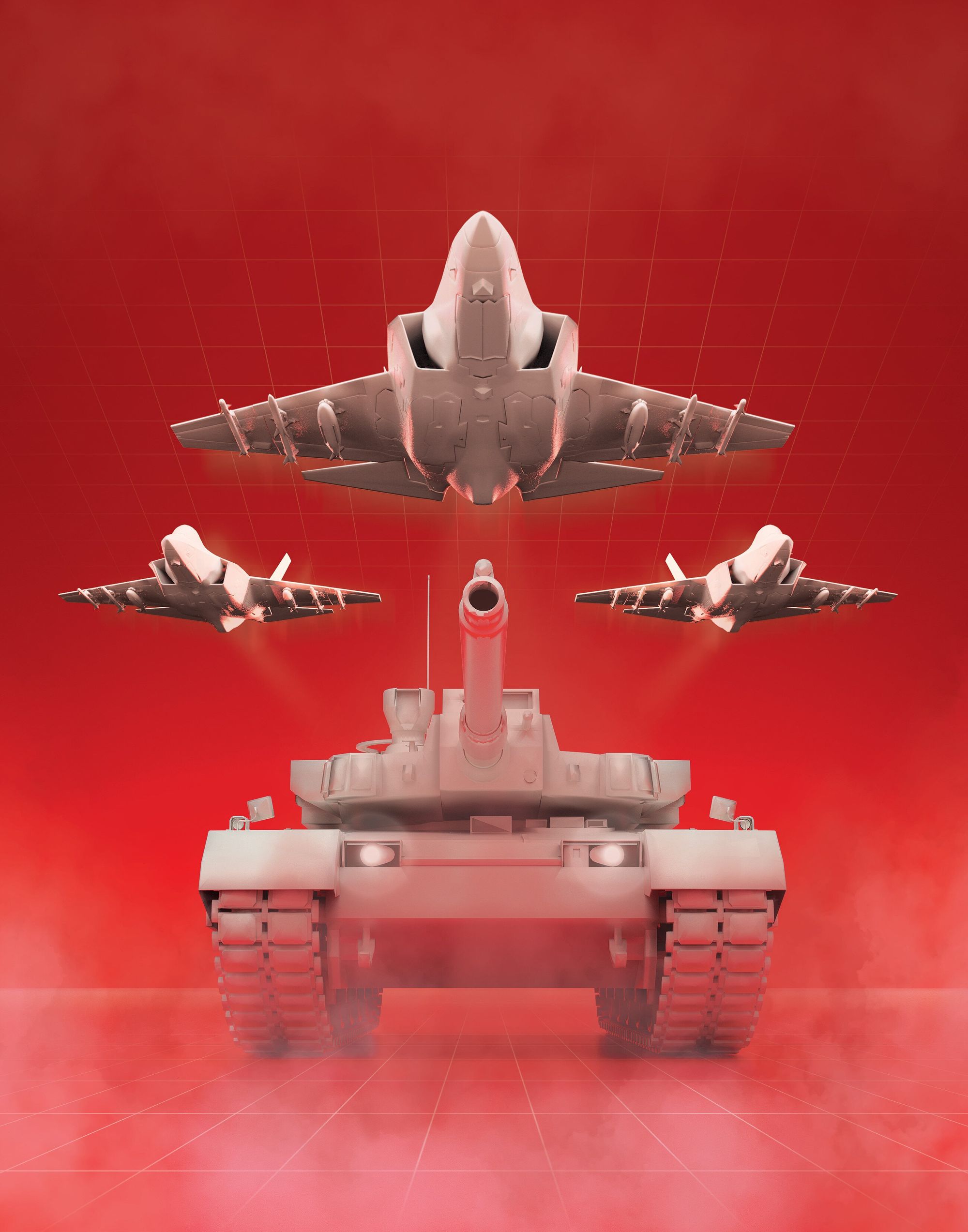The development of the Polish army was a key point of regional security policy even before the Russo-Ukrainian war, and in the last six months, Warsaw has announced huge improvements—the Polish government is developing one of the most powerful armies in Europe. Calculations made this spring put the total value of the arms purchased by Poland so far at $48 billion, and that number doesn't include the amounts contracted since and the historic South Korean order of 980 tanks based on the South Korean K2 model, 648 self-propelled K9 armoured howitzers, and 48 FA-50 fighter jets. The first 180 K2 tanks, made by Hyundai Rotem equipped with auto-loading 120mm guns, are expected to arrive in 2022, and the production of 800 upgraded tanks are set to start in 2026.
"We want the Polish army to be strong enough to deter the evil empire that’s been reborn over our eastern borders"—said Minister of Defence Mariusz Błaszczak. There’s a commitment within the political scene to Poland going faster with the modernisation of armed forces. Warsaw already spent more than 2% of the GDP on the military, and now they’re close to spending 3%. The procurement from South-Korea goes far deeper and costs a fortune, however, the government has full national support. The question is how Poland is going to be able to finance these developments in the current difficult economic situation. According to anonymous government sources, the government is taking the money from the budget, and they’re preparing financial instruments to collect the assets faster. “The budget will finance one part; the rest will come from the Central Bank of Poland that is going to issue military bonds that can be bought by companies and individuals—with this method, the state debt isn’t going to increase”—the source told Hype&Hyper. Since Poland so far has worked with Western suppliers, and several US and German defence companies have units in Poland, South Korea in the Far East may seem like an interesting choice. However, the reason is simpler than one might think. South Korea is the only supplier that can deliver weapons in a very short period of time. Russia claims to be ready to rebuild its strength within the next three years so Warsaw is following suit. “US companies wanted to deliver by 2030 while Korean companies can already do it this year”—our secret source told us. There are also negative experiences with Western defence companies, as the Polish army already has German Leopard tanks in service whose modernisation should’ve been completed two years ago, but the process is still lagging behind. “This is unacceptable for us. We don't have patience to waste more time when we have to prepare for tomorrow”—our source explained.
The purchase of equipment is only the first step that has to be followed by gathering human capital. The government wants to increase the current number of the members of the army from 115.000 to 300.000 by 2025, out of which 250.000 are going to be regular soldiers and 50.000 will make up for the territorial defence units or WOT (Wojska Obrony Terytorialnej). The power of WOT forces lies in the fact that they are made up of civilians. When increasing the numbers of an army, the fact that engineers, pilots and soldiers are being forced out of the private sector poses a huge burden on the economy, putting the country's labour market at a disadvantage. WOT services can be used to maintain a civilian occupation while gaining valuable knowledge that can also improve the resilience of the population in an event of conflict. “We’re living in peaceful times, but the question is always there: how can society be prepared for tough times? There was an idea of militarization of the entire society, however, we believe we’re about to go down this road. Still, society needs to be prepared to act responsibly and in an organised manner in order to protect the nation”—our source added.

We also asked analyst Jakub Wiech for an out-of-government perspective on recent developments concerning Poland’s army:
Poland is building one of the strongest armies of Europe, and we’re witnessing huge investments, the sustainability of which is questionable in the current economic environment. How can stable financing be secured for the development of the military?
The Polish economy is doing well despite the hard times we’re facing: the pandemic and the war happened in a very short period of time. Building the military calls for cuts on other spendings and securing the growth of the economy. This level of growth seems quite impossible in the upcoming months. The government is regrouping some spendings and that opens the possibility to secure the flow of money without breaking the constitutional levels of debt. This mechanism is very dangerous for the financial policy of Poland, however, we understand the circumstances of our specific geopolitical situation. As a part of Europe, after the military, we need to reorganise the energy sector, and that’s the aspect in which we’re redefining the European economy entirely, as we’ve seen on the 24th of February, that liberal energy policy of the Union has failed as a doctrine.
Just like Poland, the CEE region is also in the process of militarisation. The aim, according to our governmental contacts, is to build up a force that can act as a deterrent on its own, without US support through NATO.
I have great confidence in NATO. Also, the image of the White House has changed since the war broke out: from Sleepy Joe, Biden started to be the leader of the free world. First, the United States almost left the Middle East this year, the retreat from Afghanistan was a quite significant sign. In Poland, we were afraid that taking the US military out of Afghanistan would mean that the engagement of the US army would go 100% to the Far East, but what happened is that engagement was instead directed to the Far East and Central and Eastern Europe. The situation in Ukraine encourages the United States to concentrate even more attention here. We must understand that our alliance, NATO, will be more attractive to the United States, if we have our own military capacity in terms of protecting ourselves from Russian aggression. Also, it should be taken into consideration that the last few months have changed the perception of the strength of the Russian military: from the second strongest army in the world, Russia became the second strongest army in Ukraine. Before the 24th of February, many people in Poland were afraid that Russia would take our capital in 48 hours, but now it’s obvious that Russia can’t defeat Ukraine.
by Barnabás Heincz
graphics by László Bárdos

Fighting for attention in a white kimono - OIEE's latest video clip is released today

The Vinted story: sell what you do not need and buy second-hand










